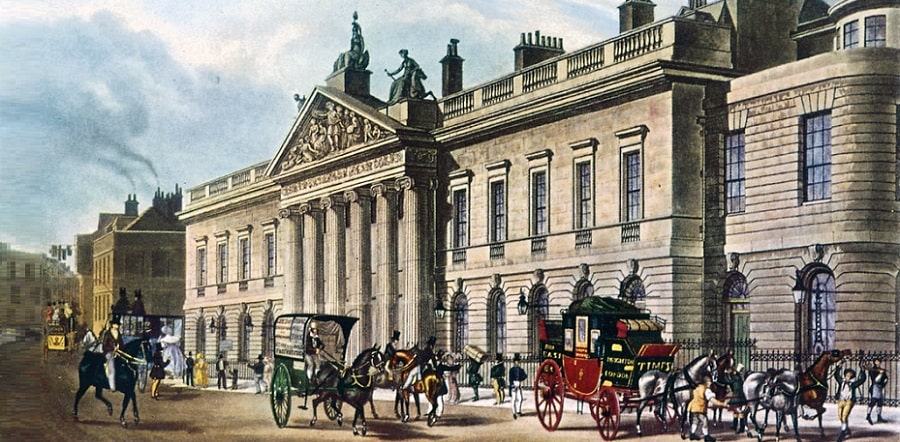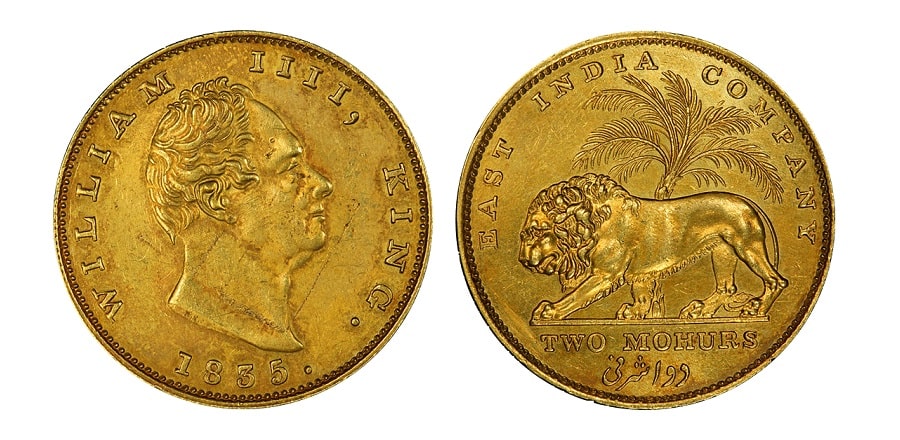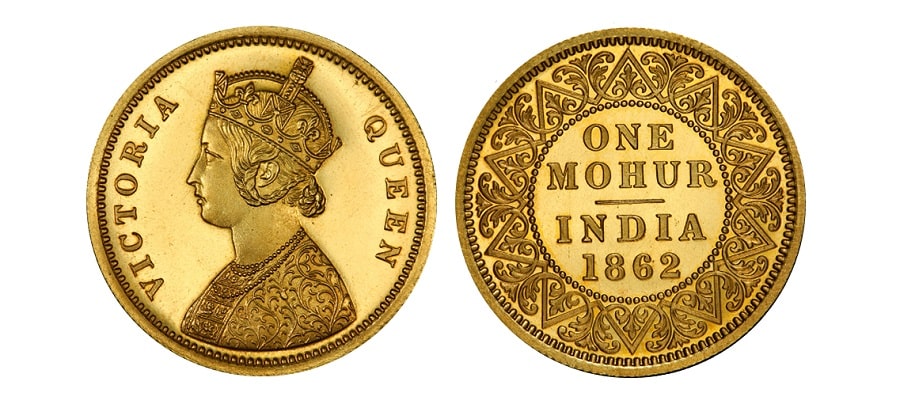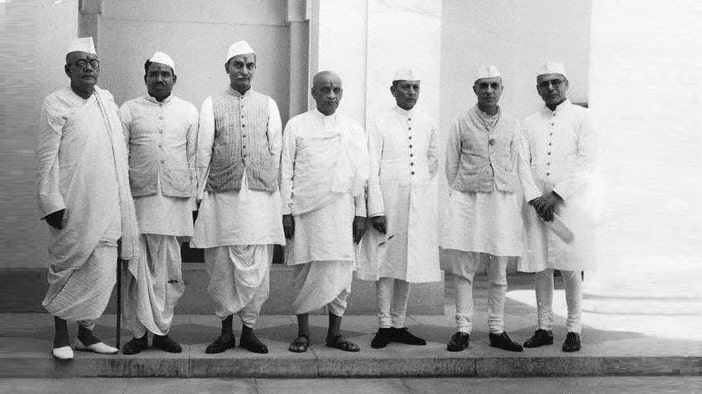Contents
history of the constitution of india
- British came to India in 1600 as East India Company.
- They had the exclusive right to trade in India according to the charter granted by Queen Elizabeth.
- In 1765, the Company, which till now had purely trading functions obtained the ‘diwani’.
- Diwani was the rights over revenue and civil justice of Bengal, Bihar, and Orissa.

Regulating Act of 1773
Reasons
- In 1772, East India Company was in financial crisis.
- They asked a loan of 1 million pounds from British govt.
- Allegations of corruption and nepotism against company officials.
- Famine in Bengal, huge population perished.
- Dual form of administration was drawing a lot of complaints.
- Defeat of company by Mysore’s Hyder Ali in 1769.
- So, Lord North decided to overhaul the management of the Company.
- This was the first step by British government to take control of India.
Features
- The Governors of Madras and Bombay were brought under the control of Bengal.
- Governor General of Bengal.
- Executive Council of Four member.
- Restricted the Court of Directors (Civil, Revenue, Military) to four-year terms.
- A Supreme Court was established at Fort William at Calcutta
- Elijah Impey as Chief Justice & 3 other judge
- Supreme Court had civil and criminal jurisdiction over only British subjects, not Indian natives.
- Prohibited from Private trade and ‘native’ Bribes.
- Company dividends were limited to 6% until it repaid a £1.5m loan.
Pitt’s India Act 1784
- Chancellor of the Exchequer to be appointed “Commissioners for the Affairs of India”.
- Separation in Commercial and political functions, system of double government.
- 3 Court of Directors – Commercial
- New 6 member Board of Control – Political (civil & military).
- ‘British Possession in India’ & British Government get control over company
- Governors of Bombay and Madras independence were deprived.
- British prime minister was William Pitt the Younger.
- In 1786 Lord Cornwallis passed a supplementary act.
- 2nd governor-general of Bengal was appointed.
history of the constitution of india
Charter Act of 1793
- It declares Governor-General’s power of over-ruling his council and Governors of the subordinate presidencies.
- Company’s dividends were allowed to be raised to 10%.
- Salaries of the staff and the Board of Control were charged to the company.
- Company had to pay the British govt. Rs.5 Lakhs from the Indian revenue annually.
- Now company can grant licenses to individuals and its employees to carry on trade in India.
Charter Act of 1813
- This Act asserted the Crown’s sovereignty over British India.
- Company’s trade monopoly was ended except for the trade in tea and with China.
- This was due to Napoleon’s Continental System in Europe.
- Now local govt. can tax people under the jurisdiction of the Supreme Court.
- Allotted Rs.1 Lakh for Indian education.
- Financial grant towards the revival of Indian literature and the promotion of science.
- Permitted Christian missionaries to propagate English and Christianity.

Charter Act of 1833
- It’s also known as Saint Helena Act 1833.
- Control of the island of Saint Helena is transferred to the Crown.
- Governor-General of Bengal became Governor General of India.
- Company’s trade with China were closed down.
- East India company became purely Administrative body.
- This act was the first step to centralize India’s administration.
- It attempted to start merit based open competition of Civil Service.
- Restrictions on European immigration and acquisition of property in India were lifted
- Law commission was established in 1834.
- Law commissioner was added to the governor general council as an ordinary Member.
- Abolition of Slavery in 1843.
- It permitted British people to settle freely in India.
Charter Act of 1853
- Separation of Legislature & Executive function
- Legislative Council became a 12 member body.
- Appointment of a separate governor for Bengal Presidency.
- Open Competition of selection of Civil Servant for Indians (Macaulay Committee).
- Local representation in Central Legislature Council form Provincial govt.
- Provincial govt. in Madras, Bombay, Bengal and Agra.
- Law member became full member with the right to vote.
Government of India Act 1858
- Passed on 2nd Aug 1858.
- This act. called for liquidation of East India Company.
- British territories in India were to be governed directly by the British Crown.
- Governor General of India became Viceroy of India.
- New Executive Council was made to assist Viceroy.
- Viceroy and the governors of different presidencies were appointed by the Crown.
- Board of Control and Court of Directors was abolished.
- Doctrine of lapse act. was ended.
- Post of Secretary of State, a member of the British cabinet, was created.
- Indian Civil Service was created under the control of the Secretary of State.
- 15 member Council of India, an advisory body to assist him.

Indian Councils Act of 1861
- Imperial Legislative Council was created with 5 members.
- 3 members were appointed by the Secretary of State for India and 2 by the Crown.
- It started functioning as a cabinet run on the portfolio system.
- 5 Portfolio was Revenue, Military, Law, Finance, and Home.
- Viceroy can issue ordinances lasting six months if the legislative council is not in session.
- Indians nominated to the Central legislative council, Raja of Benaras, Maharaja of Patiala, and Sir Dinkar Rao.
- Decentralization of power and restored legislative powers of Bombay and Madras Presidencies.
- New Legislative Council in Bengal (1862), N-W Frontier (1886), and Punjab (1897).
Indian Councils Act of 1892
- Members were given the right to ask questions on the budget and matters of public interest.
- But, they had to give a notice before 6 days.
- Principle of representation was introduced in Legislative Councils.
- Universities, district board, municipalities, zamindars and chambers of commerce can recommend members to provincial councils.
Indian Councils Act of 1909
- It known as Morley-Minto Reforms
- It passed on 12 March 1909.
- John Morley was Secretary of State for India
- Central Legislative Council member increased 16 to 60.
- Provincial Legislative Council member also increased.
- Elected members were added to provincial council.
- They were elected indirectly by electoral college of local bodies.
- Provincial Council now get Non-official majority.
- Members can ask supplementary questions and move resolutions on budget.
- 1st Indian in Viceroy Executive council, Satyendra Prasad Sinha as a Law member.
- 2 Indians were nominated to the Council of the Secretary of State.
- Separate Electorate for Muslims (Minto – father of Communal Electorate).
Government of India Act 1919
- It’s called Montague – Chelmsford Reforms
- It passed on 23 Dec 1919.
- Montague was Secretary of State.
- This Act had a separate Preamble.
- It introduce office of High Commissioner for India in London.
- 3 Indian members in Viceroy’s Executive council.
- Direct Election in Country with restricted franchise.
- Extended the communal representation to Sikhs, Christians, Anglo-Indians and Europeans.
- Subjects were divided into two lists
- Central Subjects
- Provincial Subjects
- Transferred Subject
- Reserved Subject
- Bicameral legislature was set up in Central govt. with two houses
- Upper House (Council of State)
- Lower House (Legislative Assembly)
- Elected members of Central govt. were elected by Provincial govt.
- Post of Speaker and Deputy Speaker was introduced in Central govt.
- Only 25% of the budget was subject to vote.
- Measures to resolve deadlock between both the houses
- Joint committees
- Joint conferences
- Joint sittings
- Diarchy was introduced in Provincial govt.
- 2 classes of administrators
- Executive councilors – Reserved Subject
- Land revenue
- Famine relief
- Irrigation
- Justice
- Law and order
- Newspapers
- Forests
- Ministers – Transferred Subject
- Education
- Public health & works
- Agriculture & fisheries
- Local self governments
- Medical services
- Executive councilors – Reserved Subject
- Separate Budget for Provinces.
- Public Service Commission established in India, 1st Oct 1926.
- Appointment of statutory body to inquire after 10 years.
Government of India Act 1935
- Received Royal assent in 24 July 1935.
- 321 sections 10 schedules
- Council of India was abolished and introduced advisory body in its place.
- Subjects were divided between 3 lists
- Federal List – Centre
- Reserved
- Transferred
- Provincial List – Provinces
- Concurrent List – Both
- Federal List – Centre
- Council of Ministers in central and provincial govt.
- Diarchy started at central govt.
- Reserved – Viceroy with the help of Executive Council
- Transferred – Viceroy with the help of Council of Ministers
- Council of State, the Upper house was permanent body and Federal legislature was lower house
- It provides more provincial autonomy.
- Abolished Diarchy at provincial level as per the suggestion of Simon commission.
- Bicameralism in 6 provinces out of 11.
- New Sindh province was carved out from Bombay Presidency.
- Bihar and Orissa were split.
- Burma was separated from India on 1 April 1937.
- Extended the franchise about 10% of total people of India.
- Reserve Bank of India established.
- Federal, Provincial and Joint Public Service Commission
- In 1937, Federal Court was established in Delhi.
- Safeguards and protective instruments for minorities.
Indian Independence Act 1947
Background
- In 20th Feb 1947 British prime minister Clement Attlee announced Indian Independence.
- In May 1947, Mountbatten proposed a plan under which provinces are independent to choose to join constituent assembly or not.
- This was called the ‘Dickie Bird Plan’.
- Jawaharlal Nehru, opposed it saying that it would lead to balkanization of the country.
- The plan also called Plan Balkan.
- Viceroy came up with another plan, June 3 Plan or the Mountbatten Plan.
- Plan was accepted by Congress and Muslim League.
- It was received royal assent on 18 July 1947.
- Constituent assembly could enact, repeal, and amend any law.
- Thus it was made a legislative body too.
- When it worked a legislative body it was chaired by GV Malwankar till 1949.
Features
- Division of British India into two new dominions of India and Pakistan.
- Partition of Bengal and Punjab.
- Establishment of the office of Governor-General in each two countries.
- Transfer complete legislative authority upon Constituent Assemblies of new countries.
- Termination of British control over the princely states
- Rights to Princely states to remain independent or accede to India or Pakistan.
- Abolition of the use of the title “Emperor of India” by the British monarch.

Interim Government, 1946
- It is also known as the Provisional Government.
- It was formed in 2 September 1946.
- Congress Party won 208 seats and Muslim League won 73 seats.
- 26th Oct 1946, Muslim league joined the Interim Government
- Members of the Interim Government
- Vice President of the Executive Council, External Affairs and Commonwealth Relations – Jawaharlal Nehru
- Home Affairs, Information & Broadcasting – Sardar Vallabhbhai Patel
- Agriculture & Food: Rajendra Prasad
- Commerce – Ibrahim Ismail Chundrigar (ML)
- Defence – Baldev Singh (INC)
- Finance – Liaquat Ali Khan (ML)
- Education & Arts – C Rajagopalachari (INC)
- Health – Ghazanfar Ali Khan (ML)
- Labour – Jagjivan Ram (INC)
- Law – Jogendra Nath Mandal (ML)
- Railways & Communications, Post and Air – Abdur Rab Nishtar (ML)
- Works, Mines & Power – C H Bhabha (INC)




